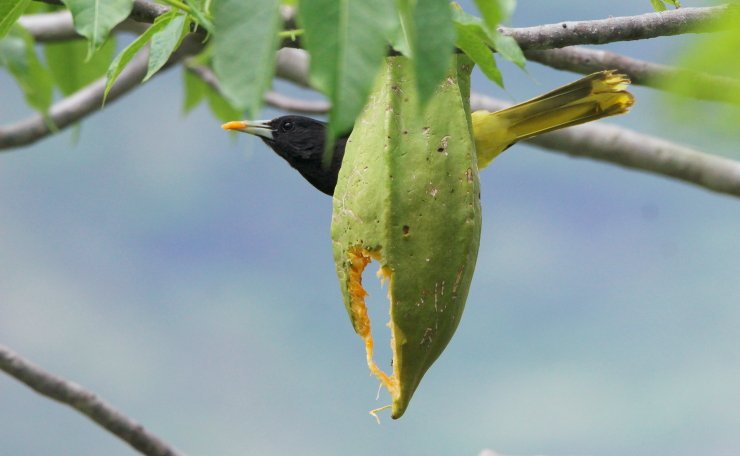
What with lockdown and all, it had been a while since I had made the one-hour drive down to Paso Ancho, my closest option for birding a full-blown tropical thorn forest habitat. At 3,300 feet (1,000 m), this is the edge of what Mexicans call Tierra Caliente, the Hot Country. But geographers and biologists would call it the northern edge of the Balsas River Basin, a hotbed of west Mexican endemism.
I have already written about my love of the Paso Ancho site, though you would have to scroll back to my very first pieces with 10,000 Birds to read those articles. And while I definitely consider myself more of a writer than a wildlife photographer, for once I have enough good photos to let my pictures do most of the talking.
The day started out with some typical monsoon-season cloudiness, so my first photos suffered a bit from low lighting. But you cannot tell the story of a visit to Paso Ancho without showing its stunning Orange-breasted Bunting. And, while the endemic Banded Wren is nowhere near as colorful, its beautiful and haunting call is one of the classic sounds of the site. It is rarely seen out in the open, so I was rather proud of the following image.
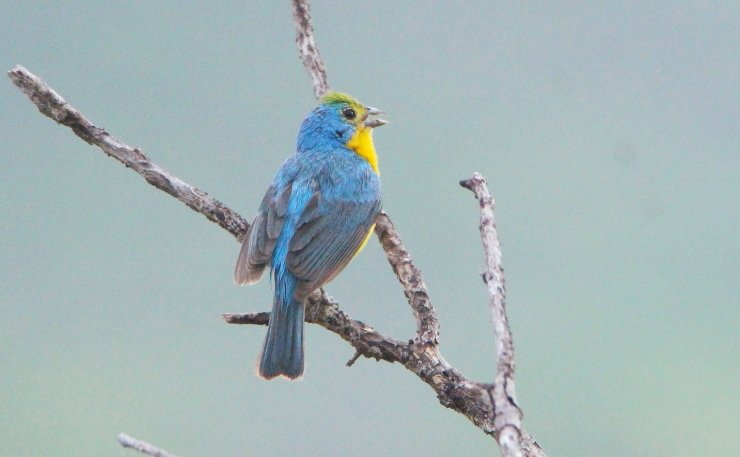
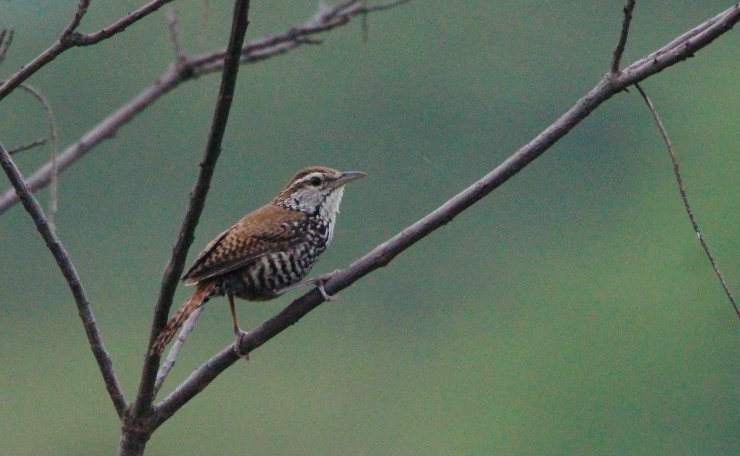
On the other hand, the low lighting gave me a chance to see something I had never before noticed: the subtle coloration on the Groove-billed Ani’s feathers. In brighter light, this bird looks all black, and it somber look tends to make me think of an undertaker, or perhaps a too-Puritanical pastor. But, in comparison with most of my sightings, these Anis looked almost gaudy.
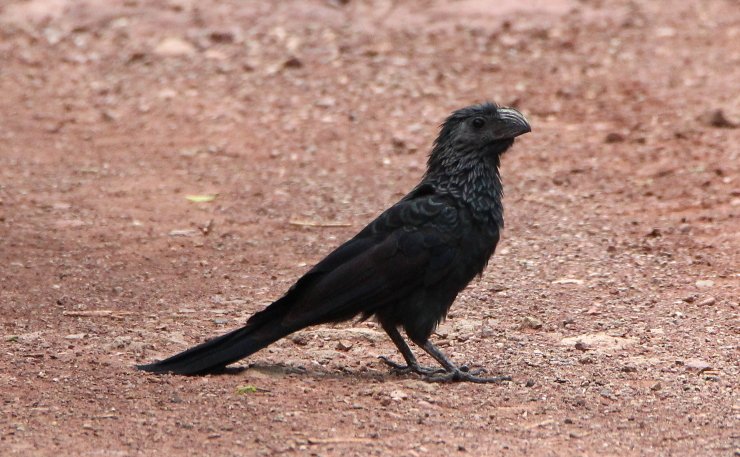
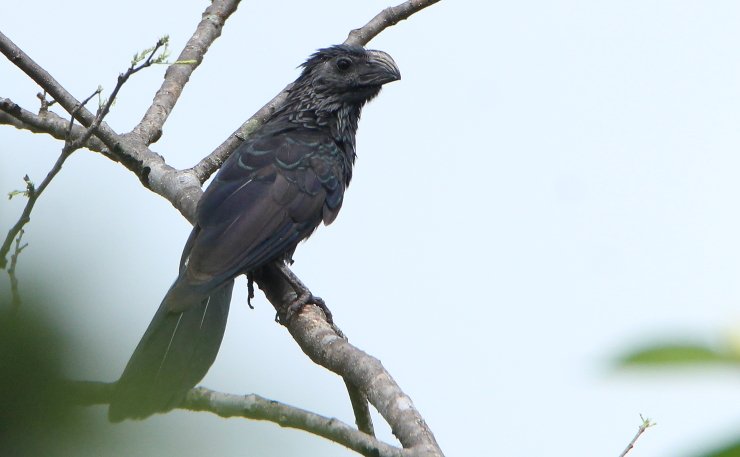
I have no shame; I want to show off this Mangrove Cuckoo, although the photos were not the best. This cool bird makes its way to Paso Ancho every summer, in spite of the distance from its namesake coastal mangroves.
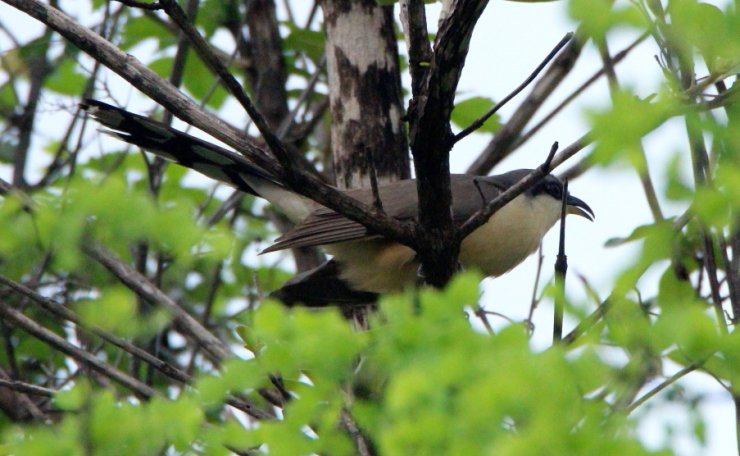
Later in the morning, the light got better, and so did my photos. The endemic (aw, heck, half the birds in this article are endemics!) Black-chested Sparrow is one of Paso Ancho’s flagship species. One allowed me to get almost embarassingly close. It wasn’t my fault; the Sparrow came to me.
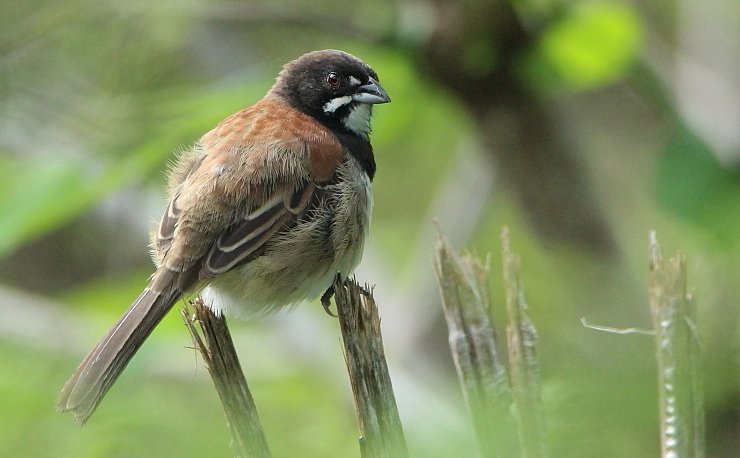
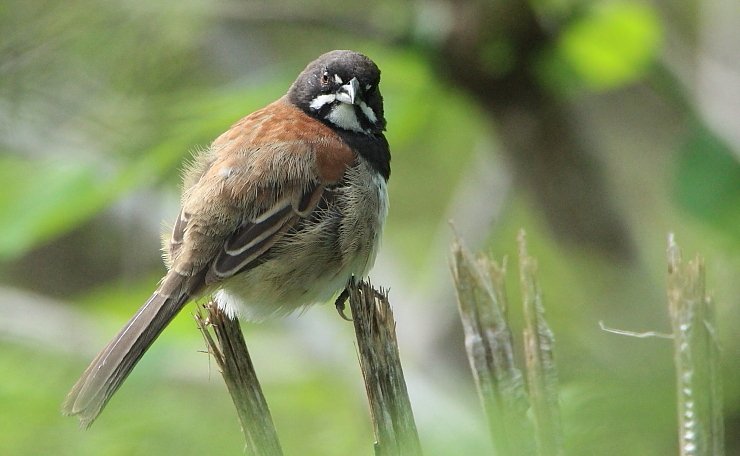
Once I moved to the riverbank, I got to see something else I had never seen before: a Squirrel Cuckoo, drying itself after a good bath. Normally those black-and-white spots would be seen evenly spaced along the closed tail.
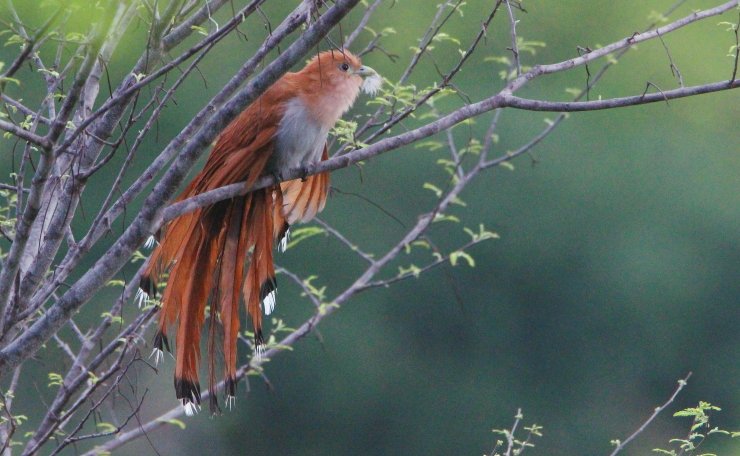
I had often wondered about a tree with an odd, torpedo-shaped fruit growing on it. It turned out to be Jacaratia mexicana, which the natives call Bonete (a reference to the four-cornered “bonnet” used by ecclesiastics), or Papaya de Monte (Mountain Papaya). As I learned this week, locals cook the unripe fruit into meat dishes, and eat the ripe fruit raw… as do birds! The apparent deliciousness of this fruit gave me my best photos yet of the beautiful (and noisy) Yellow-winged Cacique, as well as a hungry female Gray-cheeked Woodpecker.
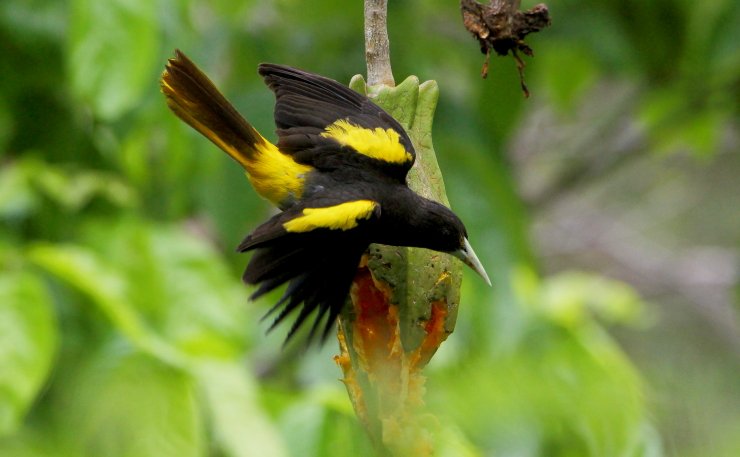
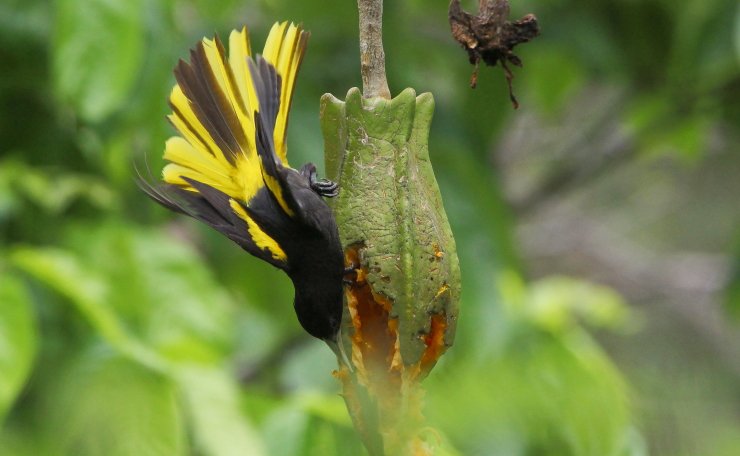
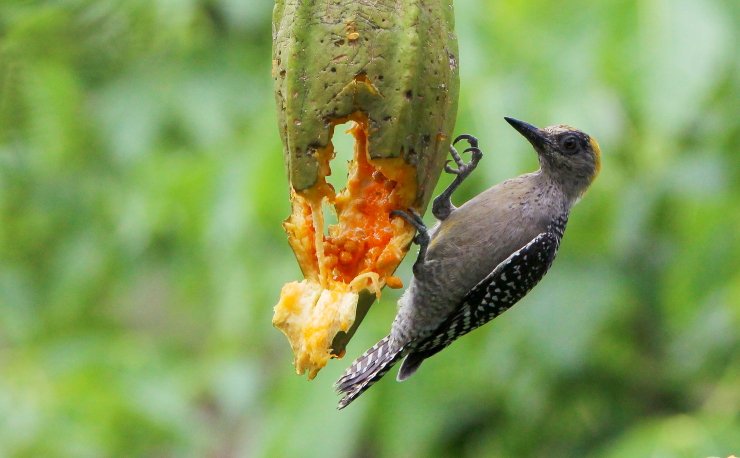
Finally, I’ll let you see some of my encounter with an expressive Ferruginous Pygmy-Owl. The owl’s calls also attracted the presence of a Yellow-green Vireo, following the First Law of Birding: that, no matter how long you wait to see a species, once you do (three weeks previous), you will see it everywhere thereafter.
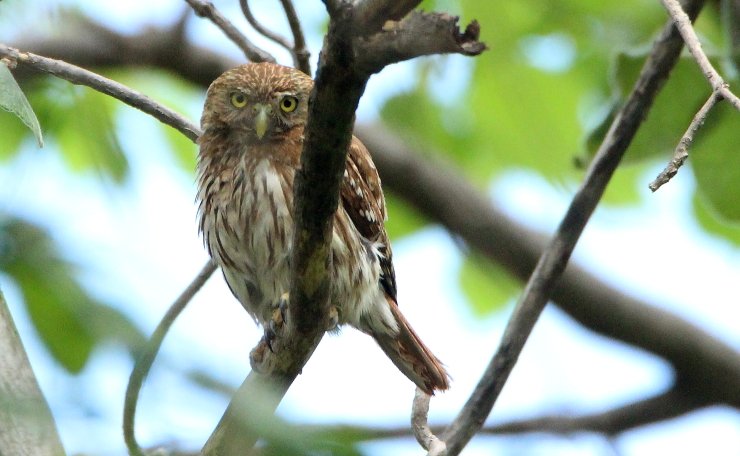
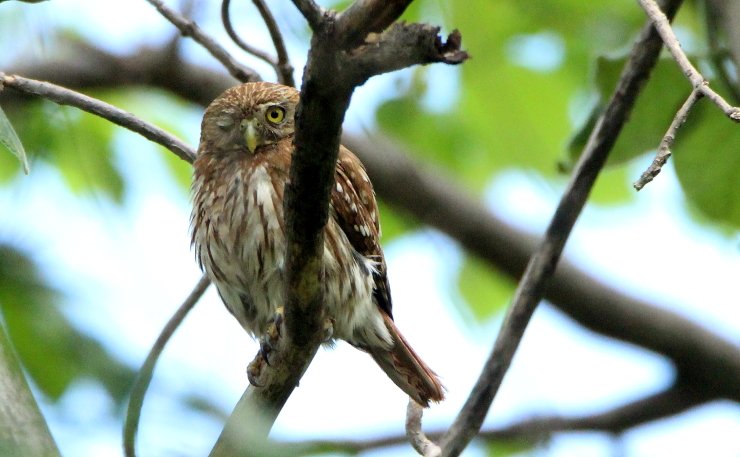
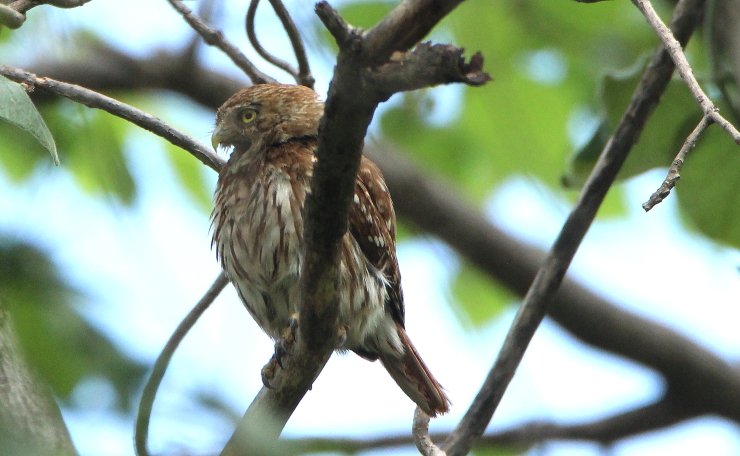
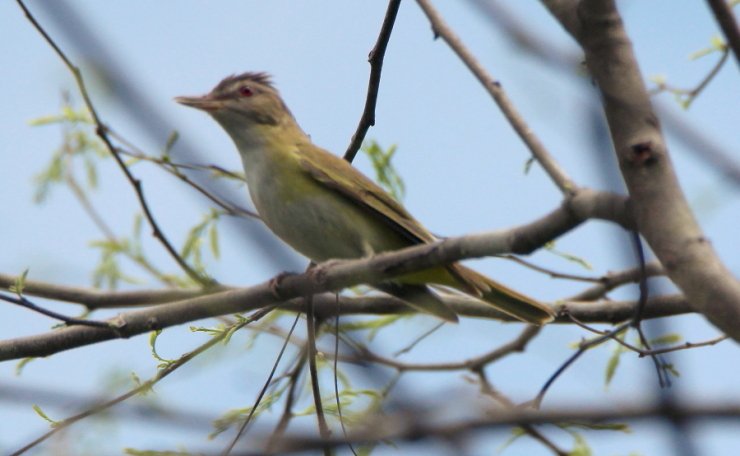
It wasn’t all as I might wish; I dipped on Banded Quails, Red-breasted Chats, Swifts, and above all, the Sinaloa Martin, which I last saw there almost exactly two years ago. But there was an unexpected trio of Red-, White-, and Short-tailed Hawks. Striped-headed Sparrows and Streak-backed Orioles seemed to be everywhere. A Golden Vireo showed up. And I, for one, choose not to let the lack of a few species ruin my enjoyment of many more.













Great photos indeed! Love the owl and the bunting, and look forward to seeing an ani at some point – impressive beaks …